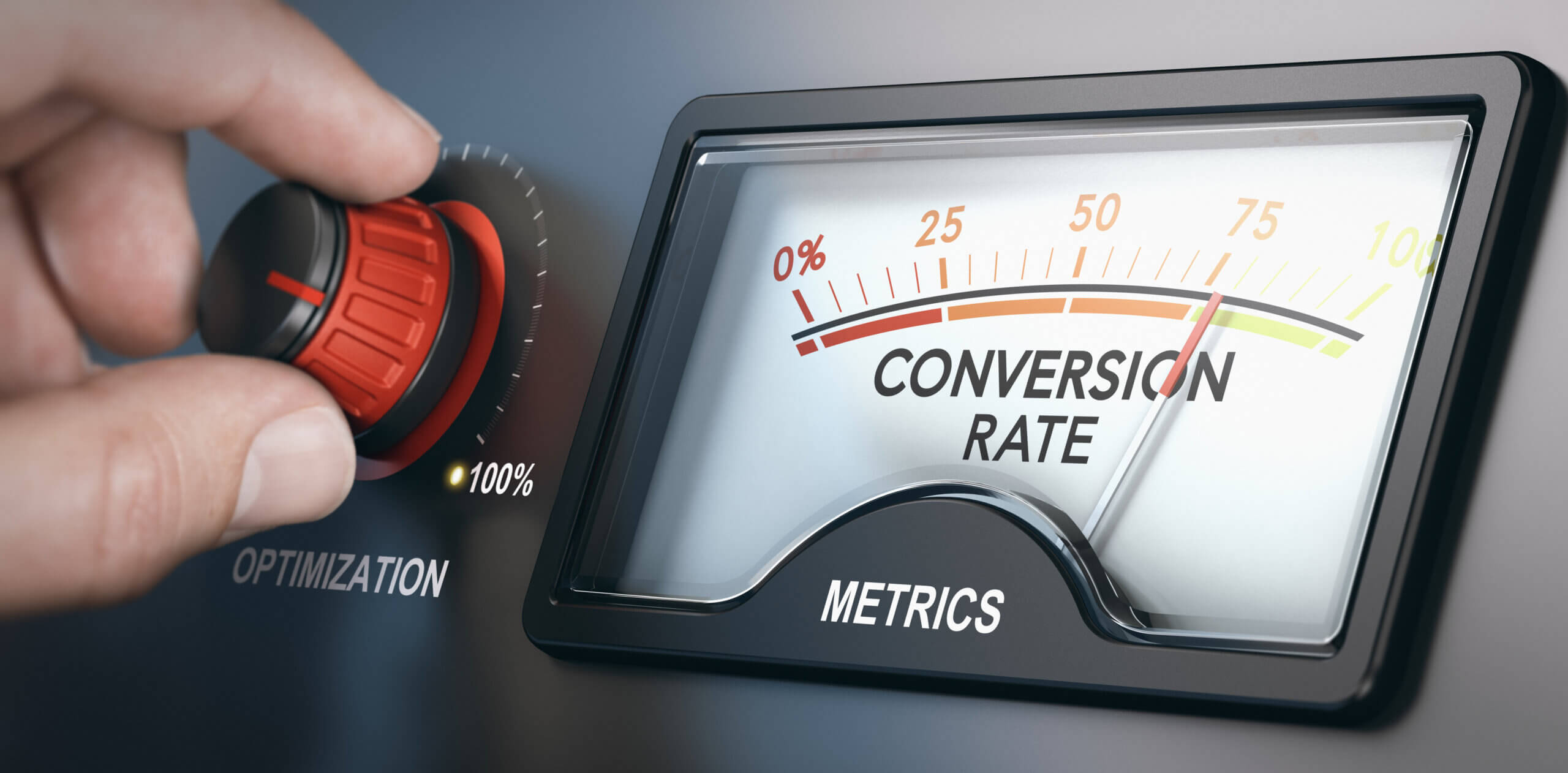In today’s highly competitive online landscape, standing out and capturing the attention of potential customers is more important than ever.
Imagine you’ve got a bustling online store, but your sales aren’t reflecting the traffic. That’s where Conversion Rate Optimization (CRO) comes in.
CRO is a powerful strategy that can help businesses maximize the value of their existing website traffic, improve marketing ROI, and lower customer acquisition costs. It isn’t just about making sales — it’s also a strategic approach that helps transform your website visitors into loyal customers.
In this blog post, we will discuss the basics of CRO, key elements of an effective strategy, top CRO recommendations for your website, advanced techniques and tools, and how to measure the success of your efforts. So, let’s dive in and unlock the full potential of your website’s conversion rate.
What is Conversion Rate Optimization (CRO)?
At its core, CRO offers a lens into user behavior, highlighting areas needing improvement and directing data-informed modifications to uplift the user experience and drive conversions.
Key elements of a robust CRO strategy include defining vital metrics and audiences, gathering user insights, and conducting A/B testing for webpage optimization.
Recognizing the significance of CRO is foundational for online marketing success. Its value lies in optimizing the current traffic’s potential, amplifying marketing return on investment (ROI), and minimizing customer acquisition expenses. Embracing CRO can transform mere site visitors into actual customers, optimizing costs and enhancing ROI.
A profound CRO approach entails grasping user navigation patterns on your site, their actions, and potential hindrances to goal completion.
Businesses can finetune their strategies by employing content tweaks, split testing, and conversion tools. It’s also imperative to ensure the proper audience alignment, as tailored messaging based on customer personas can substantially influence conversion rates.
By focusing on these facets and making the requisite changes, businesses can provide an optimal user experience and establish a seamless conversion pathway.
38 Conversion Rate Optimization Recommendations & Tips
For more on how to increase conversion rate, read on. Below, we offer 38 conversion rate optimization tips and recommendations to try so you can increase your CRO.
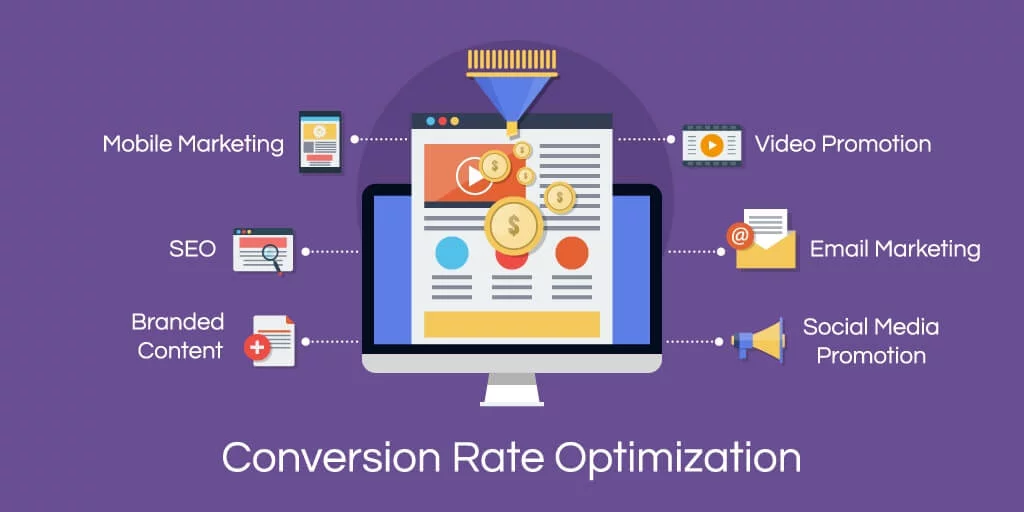
1. User Experience (UX)
Ensuring a smooth, intuitive, and engaging user experience (UX) is pivotal in guiding visitors towards the desired actions. While aesthetics are important, the emphasis should be on ease of use, clarity, and relevance.
A user’s journey on your website should be seamless. Intuitive and easily navigable structures assist users in quickly finding what they’re looking for. Beyond just benefiting the users, a well-structured site is also favored by search engines, potentially boosting your site’s ranking and visibility.
Conduct usability tests across various platforms and actively gather feedback from website visitors.
Every design element on your website should serve a purpose. Whether it’s strategically placed links, CTAs, or the navigation bar, these elements should be engaging and drive the user toward a desired action. By focusing on intentional design, you’re creating a more holistic and enjoyable user experience, which can directly influence website conversion rates, too.
2. Site Navigation
When a website’s structure allows users to effortlessly locate what they’re seeking, they’re more inclined to engage and convert.
Focus on refining the overall page layout, especially for a landing page, by testing various configurations, helping determine the most user-friendly arrangement. It’s equally crucial to streamline the navigation process. A straightforward and uncomplicated navigation system, devoid of overly complex menus, can guide users smoothly through the website. The content’s arrangement should be intuitive, grouping similar items together and ensuring that primary information is always within easy reach.
Additionally, interactive elements like dropdown menus, links, and CTAs should be easily identifiable and engaging, ensuring a seamless navigation experience.
3. Social Proof
In the form of customer testimonials and reviews, social proof plays an instrumental role in conversion optimization. Showcasing authentic feedback from satisfied customers provides visitors with assurance and builds trust around a brand or product. Positive reviews and testimonials attest to the quality and reliability of the offerings, painting a company in a favorable light. visitors
The integration of social proof into a website’s design and layout can be a game-changer for businesses, serving as an effective strategy for boosting conversions. When visitors see endorsements from others—whether in the form of written customer testimonials, ratings, or user-generated content—they perceive less risk associated with their purchase. This, in turn, makes them more likely to take the desired action, be it signing up for a newsletter, making a purchase, or any other conversion goal.
In essence, leveraging social proof in CRO strategies bolsters a brand’s reputation and significantly elevates conversion rates, improving website performance and increasing revenue.
4. Heat Mapping

Heat mapping is a powerful tool in CRO that visually represents how users interact with a website, which is why it is probably the most common of the conversion rate optimization tests. At its core, a heat map captures the areas of a webpage that receive the most attention, revealing patterns in behavior. Through colors, typically ranging from blue (least attention) to red (most attention), businesses can visually ascertain which site elements are most engaging or, conversely, which areas might be neglected.
Heat mapping tools and maps can illuminate the effectiveness of content placement, layout, and website design. For instance, if a vital piece of content is placed below the fold and receives minimal attention, the heat map would signal a need for adjustment. Additionally, by identifying areas of a site that users spend the most time on, businesses can further emphasize those areas or replicate their successful elements on other pages.
Heat mapping offers a lens into the user experience, showing what’s working and what isn’t. By capitalizing on this information, businesses can make data-driven decisions, optimizing their sites to resonate with user preferences and behavior.
5. Behavior Analysis
Behavior analysis offers businesses a deeper understanding of how users navigate and interact with their websites. This process delves into user preferences, motivations, and obstacles that can guide optimization strategies.
By tapping into tools like Crazy Egg and Hotjar, businesses can visually depict user interactions on various landing page elements, such as clicks, scrolls, and dwell times. Beyond visual representation, understanding the underlying reasons for certain behaviors becomes crucial.
For instance, if a section of the site has a high exit rate, it’s essential to delve deeper and understand what might be causing this. Perhaps there’s a broken link, or the content is not resonating with the audience. Understanding these nuances can help businesses craft effective strategies and test hypotheses that could significantly elevate their campaigns, leading to better user satisfaction and higher conversion rates.
6. Personalization
The essence of personalization lies in creating an experience that not only aims to optimize conversions but also resonates deeply with each visitor, making them feel understood and valued.
A key aspect of personalization is its adaptive nature. Rather than assuming what might appeal to users, tools are deployed to understand the most impactful personalization techniques. It’s a continuous journey of refining and adapting, fostering genuine connections, instilling trust, and addressing users’ requirements.
From crafting personalized CTAs that speak directly to the user to offering product recommendations based on past browsing history or deploying targeted messaging, every nuanced change is directed at cultivating a richer, more personalized user experience.
7. Mobile Optimization
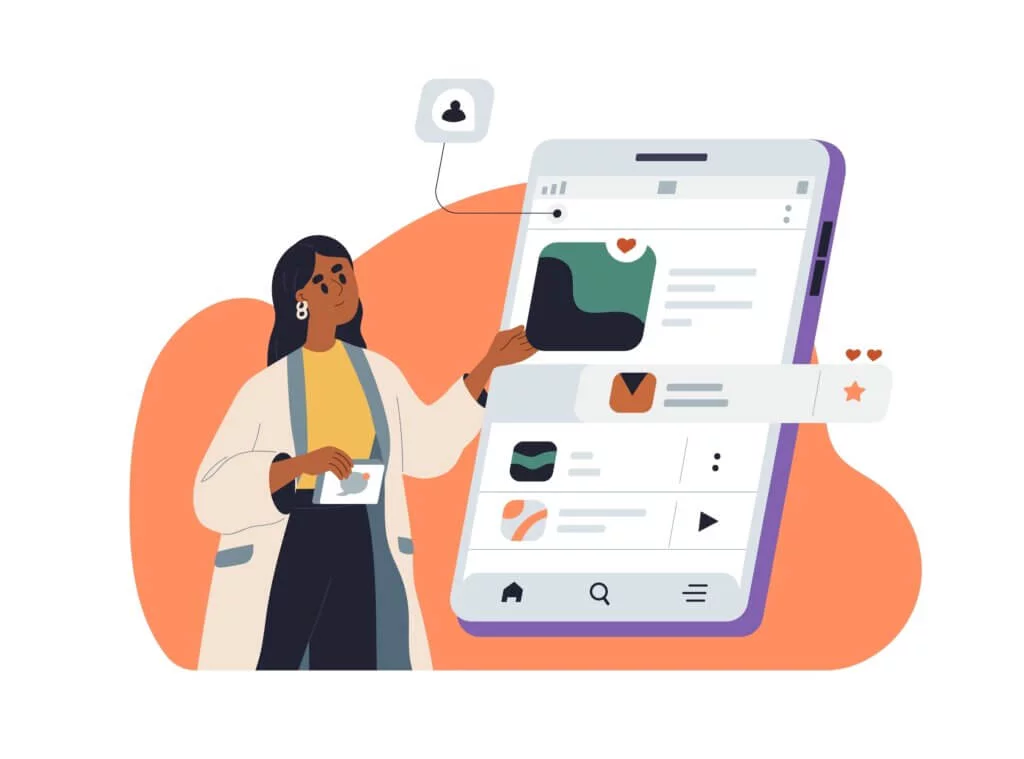
As more people access content and services through their smartphones, tablets, and other mobile devices, the demand for a smooth and consistent mobile experience intensifies. A site that hasn’t been tailored for mobile use can inadvertently deter potential customers, leading to a dip in conversion rates and potentially affecting its visibility on search engines.
Achieving mobile optimization goes beyond merely adjusting screen resolutions. It involves a holistic approach encompassing a responsive design to ensure content is displayed appropriately on any device, rapid loading times to cater to the on-the-go user, and an intuitive user interface tailored to smaller screens. The goal is to make navigation effortless and to eliminate any potential friction points that might deter a mobile user from converting.
8. Site Speed

No matter how compelling your content might be or how visually stunning your design is, if your website takes too long to load, your conversion rates will invariably suffer. A slight delay in page loading can result in losing a potential customer, as they’ll likely navigate to a more responsive competitor’s site.
A website optimized for swift loading employs multiple strategies, such as image compression, efficient caching, and content delivery networks (CDNs). Each strategy contributes to minimizing the delay between a user’s request and the website’s response, ensuring that the audience remains engaged and is less likely to bounce due to impatience.
It’s not just the users who appreciate quick load times. Search engines, in their bid to provide the best user experience, also prioritize page load time and reward faster sites with better rankings in search and search engine results pages. This means that by enhancing your site’s speed, you’re not only elevating the user experience but also boosting your website’s visibility in search engines.
9. Average Order Value (AOV)
Increasing the average order value (AOV) is a strategic move in CRO beyond just encouraging customers to buy more items. It’s about motivating them to opt for higher-priced products.
While it’s essential to focus on overall ecommerce conversion rates as a measure of success, enhancing the AOV often requires a more targeted approach. One such strategy is offering exclusive incentives to existing customers. For instance, presenting a free resource or providing discounts on bulk orders can act as immediate enticements.
Similarly, the art of upselling or cross-selling relevant products can subtly nudge customers to add more to their cart. Loyalty programs that reward increased spending can further fortify this behavior. And, of course, it’s always wise to periodically reassess the pricing strategy to ensure it aligns with market trends and customer expectations.
When businesses meticulously implement these strategies, they often witness a notable uplift in their AOV, which, in turn, directly boosts profitability.
10. Streamlined Checkout Funnel
An efficient and user-friendly checkout process can play a pivotal role in boosting your online conversions, with some studies indicating an increase by as much as 35%.
To effectively optimize this crucial phase, certain strategies come to the forefront. First and foremost, simplifying your payment systems can make a world of difference. Eliminating any redundant steps will pave the way for a smoother transaction. Next, ensuring that your value proposition stands out clearly and persuasively on the checkout pages is vital, reaffirming the customer’s decision to purchase.
Offering multiple payment options is a necessity. By catering to varied customer preferences, from credit cards to digital wallets, you significantly enhance the user experience.
One common roadblock many online retailers face is forcing users to create an account before completing a purchase. Introducing a guest checkout option can be a game-changer, allowing customers to purchase without the perceived commitment of account creation.
The objective should be to obtain only the essential information from the customer, ensuring that forms are concise and user-friendly. After all, in online shopping, convenience is king, and a streamlined checkout funnel is the crown jewel of conversion rate optimization.
11. Communicate Value
When visitors land on your website, they often seek an answer to the question, “What’s in it for me?” so businesses can’t just exhibit their products or services. They have to distinctly underline why a potential customer should choose them over competitors. This means not merely flaunting your unique selling point but ensuring that every piece of content, every graphic, and every call to action resonates deeply with your intended audience.
One of the initial touchpoints in this communicative journey is the title tag. It serves as a virtual storefront, offering a sneak peek to many website visitors into the unique value you’re offering and compelling users to delve deeper into your site.
However, the customer journey doesn’t end there. Once a visitor transitions to a product page, the content should be meticulously crafted, transforming standard descriptions into persuasive narratives. Integrating relevant tags and optimizing content for search aids in guiding potential customers seamlessly. It allows them to navigate the checkout page effortlessly, finding precisely what they’re seeking without unnecessary hurdles.
Businesses can draw visitors and convert them into loyal customers by effectively communicating value.
12. Social Commerce

In the rapidly evolving digital landscape, there’s been a perceptible shift towards harnessing the power of social commerce as a potent tool in the conversion optimization arsenal. At its core, social commerce amalgamates social media platforms with e-commerce, creating a symbiotic relationship where brands can tap into a vast audience pool and convert them using the inherent social nature of these platforms. The ethos is simple: people are influenced by the actions, behaviors, and opinions of others.
Freebies and free gifts have always been effective magnets in attracting potential customers. The reach exponentially increases when this strategy is deployed on social media platforms. A simple post about a free gift with a purchase can virally spread, driving significant traffic to the brand’s website or social media storefront and consequently increasing purchases.
The rise of influencer marketing further underscores the merging of social media and commerce. With their vast and dedicated follower bases, influencers can act as brand ambassadors. Their endorsement, when genuine and authentic, can significantly bolster trust, thereby driving conversions upward.
Paid social media advertisements offer businesses the chance to precisely target their audience based on a plethora of parameters like demographics, interests, and behaviors. This ensures that the brand message reaches the most relevant audience, further improving the chances of conversion.
13. SEO-Friendly Online Store
Creating an SEO-friendly online store is paramount for businesses aiming to capture a larger share of online traffic and, in turn, higher conversions. The idea is simple: the better your site’s SEO, the more visible it becomes to potential customers, leading to more organic traffic and increased chances of sales.
The foundation of an SEO strategy starts with understanding your target audience and the terms they use when searching online. This means diving deep into keyword research. Rather than just peppering your website with popular and high-volume search terms, it’s essential to recognize and incorporate phrases and keywords that your specific audience might use. These could be terms they use when comparing products, looking for payment options, or seeking specific product features.
But SEO doesn’t stop at content. The structure of your online store plays a pivotal role, too. One of the foundational elements is the creation of clear, concise, and descriptive URLs.
When executed correctly, SEO can significantly boost conversion rate optimization (CRO) efforts, making the store not just a digital storefront but a thriving marketplace.
14. Effective Call-to-Actions (CTAs)
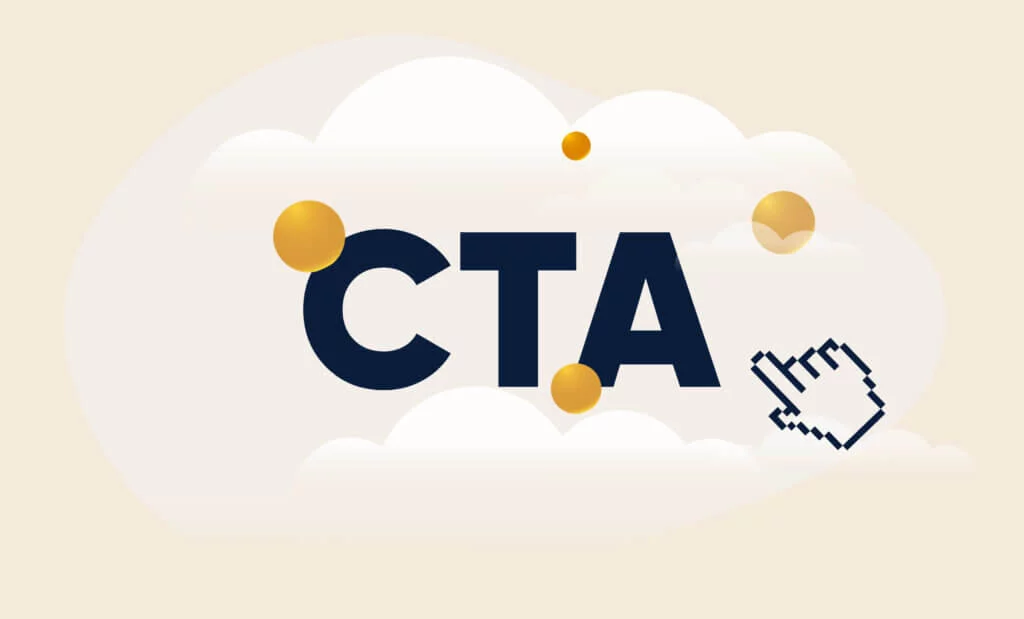
When it comes to digital marketing and website optimization, the importance of a compelling call-to-action (CTA) cannot be understated. The CTA is more than just a button or a directive; it’s a bridge between your content and your audience’s decision to take the next step, whether making a purchase, signing up for a newsletter, or any other desired action. For this reason, the crafting and placement of CTAs require careful consideration and strategic insight.
Before diving into the design or phrasing, gathering qualitative data about your visitors is imperative. One way to do this is by leveraging your content, such as blog posts, to understand the preferences, behaviors, and needs of your audience. This insight provides a roadmap for how you frame your CTAs.
Effective CTAs often follow certain guidelines. First and foremost, they use action-oriented language. Words like “discover,” “get started,” or “join now” encourage users to take immediate action. Coupled with this is the creation of a sense of urgency, with phrases like “limited time offer” or “only a few left in stock” nudging the user to act promptly.
Design-wise, the CTA needs to stand out but also feel integrated into the website’s design theme. This means selecting contrasting colors, making the CTA button large enough to be noticed but not overwhelming, and positioning it strategically on the landing page. The key is to keep the message clear and concise. Overloading a CTA with too much text or confusing directives can deter users.
When done right, a well-crafted CTA can be a powerful tool in enhancing the conversion rate optimization of any digital platform.
15. Build Trust
Building trust in the digital realm is akin to crafting a strong bridge between your brand and potential customers, ensuring they feel secure and valued at every touchpoint. Central to trust-building for conversion rate optimization (CRO) are trust signals, which act as cues that assure visitors of your brand’s credibility and reliability.
One highly effective trust signal is the offer of a money-back guarantee. By providing this assurance, businesses can significantly reduce the perceived risk associated with purchasing a product or service. It tells the customer that the brand is confident in the value of its offerings and is willing to stand behind them.
Incorporating live chat support on your platform is pivotal in nurturing trust. When customers have concerns or questions, real-time chat support provides instant clarity. This immediacy not only addresses concerns but also fosters a sense of genuine care and attention to customer needs.
Retargeting ads can further cement trust with potential customers. These ads serve as gentle reminders to users who’ve previously shown interest in your offerings but haven’t taken the final step to convert. By maintaining a presence in their online journey, you’re subtly reinforcing the value and relevance of your brand in their lives.
Ultimately, trust is not just about a singular action but an amalgamation of consistent efforts and signals that convey reliability and authenticity. In the world of CRO, where every click and interaction holds potential value, laying a foundation of trust can significantly amplify your conversion outcomes.
16. Ensure Security
Ensuring robust security has become paramount for successful online businesses. Beyond merely protecting assets, it is intrinsically tied to how users perceive and engage with websites. If users don’t feel safe, they are unlikely to convert, making security a crucial facet of conversion rate optimization (CRO).
Clear privacy policies and terms of service serve as direct communication with users, explaining how their data will be treated and protected. Displaying security badges prominently on your site further amplifies this commitment to protection. These badges, whether from associations or recognizable entities, signal to users that credible third-party organizations vouch for the site’s security.
The presence of secure payment gateways is non-negotiable. In an era where financial fraud is a genuine concern, offering payment methods that users recognize and trust can alleviate fears and increase the likelihood of a successful transaction.
Transparent return policies further seal the trust pact. They show users that the business values them beyond the immediate sale, ensuring a favorable post-purchase experience.
In the intricate dance of CRO, security isn’t just a backdrop — it’s a lead performer, setting the stage for increased conversions and sustained customer relationships.
17. A/B Testing
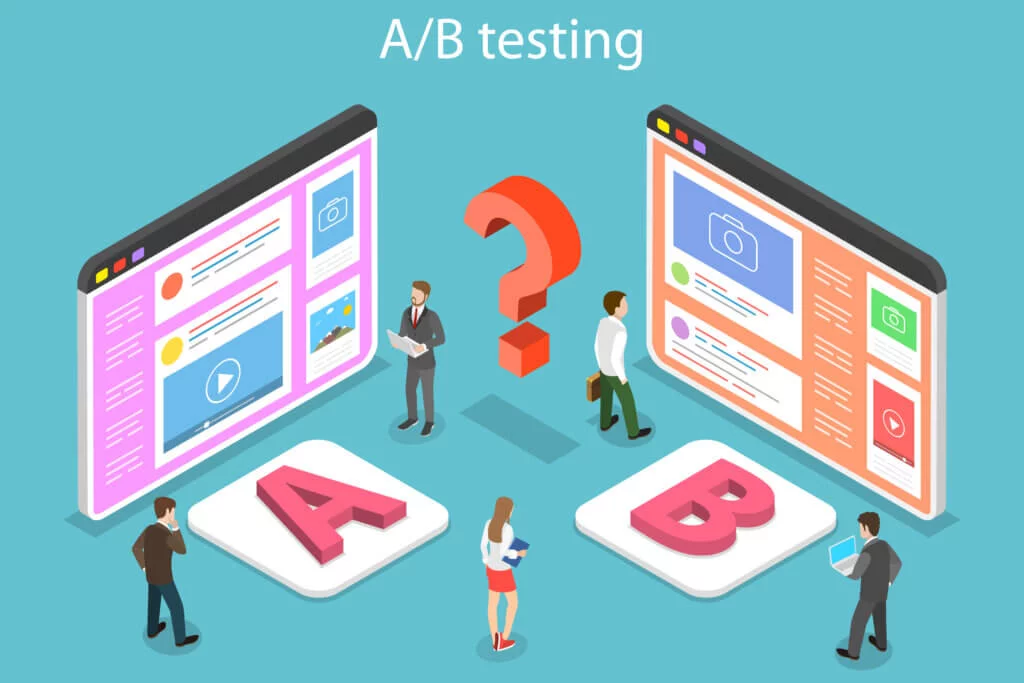
A/B testing is one of the most powerful tools in the arsenal of conversion rate optimization (CRO). It provides a structured pathway to pit different versions of your website content or design against each other, discerning which resonates more with your audience.
It’s imperative to understand the role of the sample size. A smaller sample can easily skew the results, providing misleading information. The larger and more diverse your sample size, the closer you get to accurately representing your entire audience.
Just as a marathon isn’t decided in the first mile, meaningful A/B testing results require sufficient data collection over an adequate time frame. While macro conversions like sales or sign-ups are crucial, micro conversions such as click-through rates or time spent on a landing page can provide equally valuable insights. They help identify potential areas of improvement, even if they might seem minuscule at first.
18. Segment Audience
Segmenting your audience is a vital strategy in conversion rate optimization (CRO). Understanding the nuances of your audience allows for tailored experiences that cater to specific groups, enhancing the likelihood of conversions. For instance, a first-time visitor to your website might be more receptive to an introductory offer, while a returning customer might appreciate loyalty rewards or product recommendations based on previous purchases. By segmenting these audiences, you can present targeted offers that resonate more closely with their individual situations.
Additionally, geographical, cultural, and even seasonal factors can play significant roles in purchasing decisions. Recognizing these differences and segmenting your audience accordingly ensures that the content and products displayed are relevant to the viewer, leading to increased engagement and potential conversions.
Segmentation can also delve into behavioral nuances, such as how visitors interact with your site. For instance, someone who spends a significant amount of time reading product reviews might be an informed buyer and could be more receptive to in-depth product information or comparison features. On the other hand, a visitor who often abandons their shopping cart might need additional reassurance, perhaps in the form of testimonials or a streamlined checkout process.
Segmenting your audience for CRO is about understanding the paths that lead visitors to your site and ensuring that each path is paved with tailored experiences designed to maximize conversions. It’s a dynamic and adaptive strategy that recognizes and celebrates the diversity of the online consumer landscape.
19. User Feedback

One of the most enlightening strategies to understand user behavior is to simply ask for feedback. By inquiring why users didn’t convert or complete a specific action, businesses can see visitor behavior and gain direct insights into obstacles or deterrents within the conversion process. Maybe a form was too long, a page didn’t load correctly, or the user felt there weren’t enough payment options. This feedback is invaluable because it provides a firsthand account of the user’s experience and perspective.
By creating channels for users to voice their opinions or report issues, businesses can pinpoint and address specific pain points that might not be immediately evident through standard analytics. Simple tactics like surveys, feedback forms, or even direct outreach can uncover users’ hidden challenges. For instance, a user might highlight that the website’s color scheme makes it difficult to read text, or they might suggest adding a particular feature that would enhance their experience.
20. Action-Driven Language
Action-driven language is a potent tool in conversion rate optimization (CRO). Such language is characterized by its directness, clarity, and sense of urgency. Instead of passively presenting information, action-driven language nudges users towards taking specific actions, whether signing up for a newsletter, purchasing, or downloading a resource.
For instance, instead of using a vague button label like “Learn More”, a more direct “Get Started Now” or “Grab Your Deal” can convey both the action and a sense of immediacy. The choice of verbs plays a crucial role. Words like “Discover”, “Unlock”, and “Claim” are dynamic and suggest benefits awaiting the user.
Incorporating action-driven language into call-to-action buttons, headlines, and website content can significantly affect engagement levels and conversion rates. By consistently prompting users with clear and compelling directives, businesses can optimize their platforms to transform passive visitors into active participants and customers.
21. Remove Unnecessary Items
Removing unnecessary items is pivotal in the conversion rate optimization (CRO) journey. Every element on a website or application should serve a distinct purpose, and anything that doesn’t directly contribute to user engagement or conversions can be considered clutter. Overloaded web pages not only distract users but can also slow down site performance, leading to diminished user experiences and potential abandonment.
Similarly, in design and functionality, evaluating every element critically is essential. This means scrutinizing everything from the number of form fields in a sign-up form to the number of images on a product page. If an element doesn’t enhance the user experience or drive conversions, it might be worth considering its removal.
However, while decluttering is vital, striking a balance is also crucial. Removing too much can lead to an oversimplified site that lacks essential information or functionality. It’s always a good idea to test changes thoroughly, monitor behavior, and adjust accordingly.
22. Logical Flow for Users

In the realm of conversion rate optimization (CRO), establishing a logical flow for users is paramount. A coherent, intuitive user journey can significantly impact how visitors interact with your website, making it easier to complete desired actions and ultimately convert. At its core, a logical flow ensures that users can effortlessly navigate from one step to the next without confusion or unnecessary obstacles.
The foundation of a logical flow begins with understanding the user’s goals and motivations. When visitors land on a website, they typically have a specific intent: seeking information, purchasing a product, or signing up for a service. By aligning the website’s design and content structure with this intent, businesses can guide users smoothly toward their desired outcomes.
Eliminating any unnecessary steps or distractions can streamline the user experience. This includes minimizing the number of form fields, reducing the number of landing pages a user has to navigate through, and ensuring that each step in the process is clearly defined and necessary.
Feedback loops, like confirmation messages or progress bars, can also enhance the user’s sense of flow. By providing real-time feedback, these elements reassure users that they’re on the right track, enhancing their confidence and trust in the process.
A logical flow for users is not just about aesthetic design but about creating an environment where users feel guided, understood, and valued. When visitors can navigate a website with ease and clarity, they are far more likely to engage, participate, and, ultimately, convert.
23. Engaging Visuals
Engaging visuals has become a cornerstone of effective conversion rate optimization (CRO). As the digital landscape becomes increasingly competitive, the importance of standing out and making a lasting impression on users cannot be understated.
High-quality images are essential. High-quality images enhance a website’s aesthetic appeal and instill a sense of trustworthiness and professionalism in your brand. They subtly convey that attention has been paid to details, which can, in turn, assure users of the quality of products or services being offered.
The rise of videos and infographics in digital marketing is hard to ignore. Videos have the innate ability to convey complex information in an easily digestible manner. They can hold user attention for longer durations, provide immersive experiences, and foster emotional connections. Infographics, on the other hand, are adept at breaking down data-heavy content into visually appealing and understandable chunks. Their colorful and organized nature makes them highly shareable, further amplifying their reach and impact.
Optimizing images and scripts ensures that they load swiftly and do not negatively impact the site’s performance. Slow-loading visuals can deter users, increase bounce rates, and diminish the overall user experience. Hence, employing techniques like compression without compromising on quality, using responsive images that adapt to different screen sizes, and optimizing scripts associated with videos or other dynamic visual elements are vital.
Engaging visuals are more than just decorative elements on a website. They are powerful tools that enhance user experience, convey brand messages, and increase conversions. But their efficacy lies in their quality and optimization.
24. Compelling Headlines
The importance of a compelling headline cannot be overstated. It’s often the first thing users see and can be the determining factor in whether they continue to engage with your content or move on. A headline has the power to captivate an audience, convey a message succinctly, and encourage further exploration. In essence, it sets the tone for the entire user experience.
However, crafting the perfect headline isn’t just about being creative. It’s a meticulous process that often requires experimentation and adaptation based on audience response. That’s where testing various headline structures comes into play. By trying out different phrasings, tones, or even lengths, you can gauge which resonates most with your target demographic. For instance, a question-based headline might intrigue some users, urging them to seek answers, while a statement or a provocative claim might appeal to others, prompting them to learn more.
Through systematic testing, businesses can zero in on headlines that grab attention and drive user engagement and, ultimately, conversions.
25. Relevant Content
Relevance is the key to engagement. When it comes to conversion rate optimization (CRO), offering content that makes sense and speaks directly to the user’s needs, desires, and pain points is paramount. Visitors arrive on a site or platform with specific intentions, whether seeking information, looking for a product, or exploring a service. If the content they encounter doesn’t align with their expectations or fails to answer their queries, the likelihood of them bouncing off the site increases.
When users feel that a brand or site understands their needs and offers solutions tailored for them, they’re more likely to engage deeper, spend more time on the platform, and eventually take the desired action, be it a purchase, sign-up, or any other form of conversion. This underscores the importance of knowing your audience. Comprehensive audience research forms the foundation of crafting content that resonates.
But relevance is not a static criterion. As markets evolve, user preferences shift, and industry trends change, the definition of what is “relevant” to the audience will also transform. Regularly updating content, staying abreast of industry trends, and constantly gauging user feedback are all essential to ensuring content remains relevant.
26. Focus on Content Strategy

When diving deep into conversion rate optimization (CRO), one cannot overlook the pivotal role of content strategy. It’s not just about having content — it’s about having the right content. An integral aspect of this strategy is experimenting with content length. It might sound trivial, but the length can significantly influence user engagement and, ultimately, conversions.
Sometimes, a concise, straight-to-the-point piece of content can resonate more with users, offering them the precise information they need without the fluff. This brevity can lead to quicker decisions and higher conversion rates. On the other hand, there are scenarios where users are looking for in-depth information, comprehensive guides, or detailed product reviews. In such cases, longer, more detailed content can establish authority, build trust, and guide the user meticulously through decision-making.
But it’s also essential to understand that content length should not compromise quality. Whether it’s a 200-word article or a 2,000-word guide, the content must offer value, be well-researched, and cater to the user’s needs.
Businesses can fine-tune their content offerings by focusing on a content strategy that embraces experimentation and is responsive to user feedback, enhancing user engagement and boosting conversions.
27. Clear Value Propositions
In the vast online business landscape, where competition is fierce and choices abound, a clear value proposition stands out as one of the most potent tools for conversion rate optimization (CRO). But merely having a value proposition isn’t enough — it needs to be communicated clearly and effectively to resonate with your target audience.
At its core, a value proposition tells your audience what they can expect from your products and services and how these offerings are different or superior to others in the market. It’s essential to prioritize clarity over cleverness. While a catchy, creative statement might grab attention, the clear, straightforward promises often convert visitors into customers.
The design elements, visuals, and overall presentation play a critical role in amplifying the impact of your value proposition. Ensuring it’s prominently placed, ideally above the fold on your website, and supported by engaging visuals can further enhance its effectiveness.
In pursuing improved CRO, businesses must ensure that their value proposition is not just present but crystal clear and compelling. In a digital world flooded with choices, a clear value proposition can be the deciding factor that turns a visitor into a loyal customer.
28. Define Benefits to the User
Conversion rate optimization (CRO) thrives when businesses can effectively communicate the direct benefits their products or services offer to users.
To successfully communicate these benefits, it’s crucial to understand the target audience’s pain points, desires, and needs. Conducting user research, surveys, or interviews can shed light on what truly matters to them. Once these insights are gathered, businesses can tailor their messaging to resonate deeply, addressing specific problems and offering solutions.
In a digital landscape with limited attention spans, benefits should be communicated succinctly, avoiding jargon or overly technical language. The language should evoke emotions, painting a vivid picture of positive outcomes. Additionally, combining compelling visuals with well-crafted text can further enhance the message, making it more memorable and engaging.
Defining and effectively communicating benefits to the user can significantly enhance the user experience. When users feel that a business understands their needs and offers tangible solutions, they are more likely to trust, engage with, and ultimately convert on that platform.
29. Scannable Content
In today’s fast-paced digital world, where internet users often skim content rather than read every word, the presentation of information plays a critical role in conversion rate optimization (CRO). Scannable content has become an indispensable tool for online businesses aiming to capture and retain their audience’s attention.
Incorporating bullet points is a popular method to achieve this, as they break down complex ideas into bite-sized pieces, making it easier for readers to absorb the core message. Bullet points are especially useful in highlighting lists, features, or benefits, allowing users to quickly gauge the value on offer.
Subheadings, on the other hand, act as signposts throughout a piece of content, guiding readers through different sections. They give structure to articles, blogs, or even product pages and descriptions, making it more digestible.
While longer, detailed paragraphs have their place, for most online content, short paragraphs are preferable. They create white space, which gives a visual break, reducing the cognitive load on readers. A wall of text can be intimidating and drive users away, but breaking content into shorter chunks makes it more inviting and more likely that users will engage.
When content is scannable, users can quickly determine its relevance, making them more likely to stay, engage, and, ultimately, take the desired action.
30. Minimize Cart Abandonment
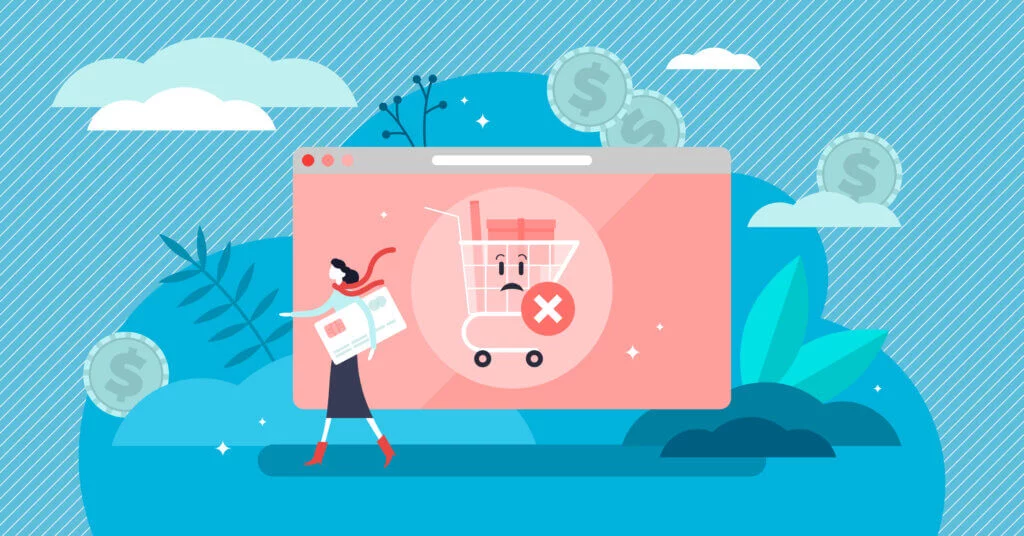
Cart abandonment is a critical concern for e-commerce businesses. Every time a user adds items to their cart but doesn’t complete the purchase, potential revenue slips away. However, several strategies can be employed to minimize the average cart abandonment rate and optimize conversion rates.
Retargeting is one such effective strategy. Using cookies or pixel tags, businesses can track users who have abandoned their carts and display relevant ads to them as they browse other parts of the web. These ads serve as reminders of the products they showed interest in and can often entice them to return to the website and finalize the purchase.
Email reminders, specifically cart abandonment emails, are another potent tool in this endeavor. By sending timely and well-crafted emails to users who have left items in their cart, businesses can remind them of what they’ve left behind. These emails can showcase the products in the cart, provide additional information, or even offer personalized recommendations. The key is to make the email engaging and to emphasize the value of completing the purchase.
Offering limited-time discounts, free shipping, or bonus items can give some users the nudge to complete their transactions. It’s essential, however, to ensure that these incentives are sustainable and don’t undercut the business’s profitability.
While cart abandonment is an inevitable part of e-commerce, it’s not insurmountable. By employing retargeting strategies, sending effective cart abandonment emails, and offering timely incentives, businesses can bring back users to their site and improve their chances of converting them into paying customers.
31. Product Recommendations
Product recommendations have become vital in e-commerce, driving conversions and enhancing the user experience. When tailored effectively, these recommendations can lead to increased cart values, better user engagement, and overall enhanced shopping experiences.
One of the most impactful ways to curate these suggestions is by leveraging a user’s browsing history. This data enables businesses to recommend products that align closely with what the user might be interested in when shopping online or searching for, thus creating a more personalized and enticing shopping experience. For instance, if a user has been exploring winter jackets, suggesting complementary items like scarves or gloves can prove fruitful.
Similarly, insights drawn from previous purchases can significantly inform product recommendations. A user who previously bought running shoes might be interested in athletic wear or fitness accessories during their next visit. By recalling and capitalizing on this previous purchase data, businesses can show users that they understand their needs and preferences, fostering trust and encouraging repeat purchases.
When product recommendations are grounded in a deep understanding of users’ browsing behaviors and purchase histories, they can be a powerful tool for conversion rate optimization. By presenting users with relevant and compelling product options, businesses can meet and anticipate customer needs, resulting in a more seamless and satisfying shopping journey.
32. Tailored Email Campaigns

Email marketing remains a potent tool in the digital marketer’s arsenal, and its efficacy is notably amplified when tailored to the specific interests and behaviors of the recipients. One of the key strategies in ensuring that email campaigns resonate with the audience and drive conversions is segmenting the email list.
Imagine sending a promotional offer for a product category a user has shown interest in versus sending a generic promotional message to your entire list. The former is more likely to resonate, engage the recipient, and potentially lead to a sale or lifetime customer. Furthermore, segmented campaigns often result in higher open rates, fewer unsubscribe rates, and, most crucially, enhanced conversion rates.
Tailored email campaigns that leverage list segmentation allow businesses to speak directly to their audience’s varied needs and interests. By delivering content that aligns closely with what the recipients care about, brands foster deeper connections, build trust, and ultimately pave the way to increase conversions.
33. Real-Time Activity
In the evolving digital marketing and e-commerce landscape, engaging users and creating a sense of urgency or popularity can significantly improve conversion rates. One innovative technique that has emerged in this realm is showcasing real-time activity to prospective customers. By displaying notifications such as “Someone just purchased this item 2 minutes ago,” brands can create an environment where products or services seem in demand, influencing other users to consider making a purchase.
Real-time notifications can induce a sense of urgency. When customers observe that a product is being frequently purchased, it can trigger a fear of missing out (FOMO). They may perceive the item as popular, trendy, or even at risk of selling out, prompting them to act more swiftly than they might have otherwise.
By incorporating real-time activity notifications into their platforms, brands can tap into powerful psychological triggers, fostering trust, generating urgency, and ultimately increasing conversion rate optimization efforts.
34. Limited Time Offers
Limited-time offers leverage the principles of scarcity and urgency, and these offers tap into the fundamental human fear of missing out on a good deal or exclusive opportunity. By offering significant discounts or exclusive deals for a restricted period, brands can drive a sudden influx of traffic and conversions as customers rush to take advantage of the limited-time bargain. Flash sales are a prime example of this strategy in action.
Countdown timers can be a potent tool in amplifying the sense of urgency around a sale. When users can visually see the time ticking away, it serves as a constant reminder that the window of opportunity is closing. This tangible representation of time slipping away can be the nudge a potential customer needs to move from consideration to purchase.
We are wired to be attracted to exclusivity and urgency. By integrating elements of limited-time offers, businesses can stimulate rapid decision-making, encouraging users to act fast and boosting conversion rates.
35. Low Stock Alerts
Low-stock alerts have emerged as a powerful tool for driving conversion rate optimization (CRO) in e-commerce platforms. By strategically highlighting low stock levels, online retailers can tap into the innate human inclination towards scarcity and the fear of missing out (FOMO). When shoppers see that a product they’re interested in has limited quantities left, it can spur them to make a purchase decision more swiftly than they might have otherwise.
This tactic not only encourages quick buying decisions but can also enhance the overall user experience. By transparently displaying stock levels, businesses convey a sense of honesty and openness, which can build trust with consumers. No one likes the disappointment of deciding to buy only to find out a product is out of stock at the last moment. Low-stock alerts can prevent this scenario, ensuring customers are informed well in advance.
36. Analyze Test Results

Analyzing test results is a cornerstone of conversion rate optimization (CRO). Delving deep into the data can offer invaluable insights into how users interact with a website or digital platform. It helps businesses understand where they’re hitting the mark and, more importantly, where improvements are needed. Companies can gain a clear picture of behavior by employing analytics tools, and pinpointing areas where users tend to drop off or abandon the conversion funnel.
It’s essential to approach the analytics with clear objectives in mind, ensuring that the data’s insights are actionable. For instance, if a particular landing page has a high exit rate, it’s crucial to delve deeper and determine the underlying causes. Is the content not engaging enough? Is the call-to-action unclear? Or perhaps there’s a technical issue hindering the user experience.
By continuously monitoring, testing, and refining based on real-world data and negative feedback, they can ensure that their digital platforms are primed to convert visitors into loyal customers.
37. Provide Clear Error Messages
Understanding and optimizing the user experience is a crucial component of conversion rate optimization (CRO), and one aspect that’s often overlooked is the clarity and effectiveness of error messages. Clear error messages are more than just a courtesy; they’re necessary for guiding users smoothly through their digital journey.
When a mistake occurs, be it because of user input or a technical glitch, a vague or generic error message can leave the user frustrated and uncertain about how to proceed. On the contrary, an informative and precise error message identifies the problem and offers guidance on resolving it. For example, instead of displaying a message like “Invalid input,” a more constructive approach would be “The email address format is incorrect. Please ensure you’ve included ‘@’ and a domain.”
By letting users know exactly what went wrong and providing clear instructions on how to fix it, businesses can maintain the user’s trust and increase the likelihood of them completing their intended action. Such attention to detail demonstrates a brand’s commitment to user-centric design, ensuring that even when things don’t go as planned, users are equipped with the information they need to navigate the hiccup seamlessly.
38. Stay Updated with CRO Trends
In the dynamic world of digital marketing, staying updated with the latest trends and best practices in conversion rate optimization (CRO) is crucial for maintaining a competitive edge and achieving sustained success. The digital landscape is constantly in flux, with user behaviors, technology, and algorithms evolving rapidly. Businesses that wish to thrive in this environment must make continuous learning and adaptation a core part of their CRO strategy.
One fundamental aspect of staying ahead in CRO is educating your team. The more individuals within your organization understand CRO principles and methodologies, the better equipped they’ll be to contribute to your optimization efforts. From marketers and designers to developers and data analysts, fostering a culture of CRO education ensures that everyone plays a role in identifying opportunities for improvement and implementing data-driven changes.
By keeping your finger on the pulse of CRO trends and continuously educating your team, you can adapt swiftly to shifting market dynamics, leverage emerging technologies, and refine your strategies to maximize conversions. In an era where digital competition is fierce, the ability to stay updated and agile in your CRO efforts can be a game-changer for your business’s long-term success.
Try CRO with Searchbloom
Unlock your website’s full potential with Searchbloom’s CRO expertise. Dive into data-driven decisions and proven conversion rate optimization tests that will help your conversions soar. Start your CRO journey with us today!

